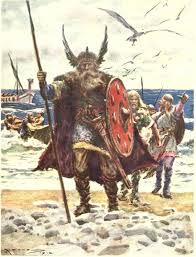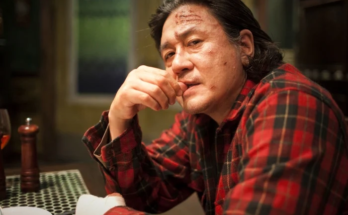The Viking Age in Ireland is a fascinating period that forever shaped the island’s history, culture, and identity. It’s a story of conquest, trade, integration, and transformation that continues to capture imaginations today. But who were these Norsemen, and what brought them to Ireland’s shores? Let’s dive deep into the captivating saga of the Viking Age in Ireland.
Who Were the Vikings?

The Vikings, originating from Scandinavia (modern-day Norway, Sweden, and Denmark), were seafaring adventurers known for their raiding, trading, and exploration. While they’re often remembered as fierce warriors, the Vikings were also skilled craftsmen, traders, and settlers.
Why Did the Vikings Come to Ireland?
During the late 8th century, the Vikings began expanding their horizons. Overpopulation, political unrest, and a desire for wealth drove these Norsemen to explore new territories. Ireland, with its rich monasteries and lack of centralized defense, became a prime target.
The First Viking Raids
In 795 AD, the first recorded Viking raid in Ireland occurred at the monastery on Lambay Island, just off Dublin’s coast. This marked the beginning of frequent and devastating raids on monasteries like Clonmacnoise and Glendalough, which held valuable treasures and were poorly defended.
The Monasteries: Centers of Wealth
Irish monasteries were not only religious centers but also repositories of gold, silver, and precious manuscripts. To the Vikings, they were treasure troves waiting to be plundered. The monks’ lack of military expertise made these sites easy prey.
The Vikings Settle in Ireland
By the mid-9th century, the Vikings shifted from raiding to settling. They established longphorts (fortified encampments) along Ireland’s rivers and coasts. Dublin, founded in 841 AD, became one of the most significant Viking settlements in Ireland.
The Founding of Dublin
Dublin’s origins as a Viking settlement are a testament to their strategic acumen. Situated at the mouth of the River Liffey, it served as a hub for trade and military operations. Over time, Dublin grew into a thriving town with bustling markets and strong fortifications.
A Clash of Cultures
The arrival of the Vikings wasn’t without resistance. Irish kings frequently fought back, leading to a series of battles that defined this tumultuous period. The dynamic between the native Irish and the Norse settlers was complex, marked by both conflict and cooperation.
The Battle of Clontarf
The Battle of Clontarf in 1014 is one of the most famous confrontations of the Viking Age in Ireland. Led by High King Brian Boru, the Irish forces defeated the Viking armies and their allies. While the battle marked the decline of Viking power in Ireland, it also solidified their lasting legacy.
The Viking Influence on Irish Culture
Despite the conflicts, the Vikings left an indelible mark on Irish society. Their contributions to trade, language, and urbanization are still evident today.
Trade and Commerce
The Vikings established Ireland’s first towns, including Dublin, Wexford, and Waterford. These towns became centers of trade, connecting Ireland to a vast network that extended across Europe and beyond. Goods like amber, silk, and spices flowed through these bustling markets.
Linguistic Legacy
The Norse language influenced Irish, leaving behind words related to seafaring and commerce. Place names like Howth (Hófði) and Wexford (Veisafjörðr) reflect this linguistic heritage.
Artistic Contributions
The intermingling of Irish and Viking cultures led to unique artistic expressions. Norse motifs merged with traditional Irish designs, creating stunning artifacts like the Claddagh ring and intricate metalwork.
Religion and the Vikings
Initially, the Vikings brought their pagan beliefs to Ireland. Over time, however, many adopted Christianity, integrating into Irish society. This transition is evident in the burial practices and artifacts from the period.
Pagan Practices
The Vikings worshiped gods like Odin, Thor, and Freyja. Their rituals included sacrifices and ceremonies to honor these deities. Archaeological finds, such as amulets and weapons, provide insight into their religious practices.
Conversion to Christianity
As the Vikings settled and intermarried with the Irish, many converted to Christianity. This shift was not merely religious but also political, facilitating alliances with local rulers.
The Decline of Viking Power
By the late 11th century, the Viking influence in Ireland began to wane. The rise of powerful Irish kings and the eventual arrival of the Normans marked the end of the Viking Age in Ireland.
Legacy and Impact
Despite their decline, the Vikings left an enduring legacy. The towns they founded became economic and cultural hubs, shaping Ireland’s development for centuries.
Exploring Viking Sites in Ireland Today
For history enthusiasts, Ireland offers a wealth of Viking heritage sites to explore.
Dublinia
Dublinia, a historical museum in Dublin, brings the Viking Age to life with interactive exhibits. Visitors can experience what life was like in a Viking settlement.
Woodstown
The Viking settlement at Woodstown in County Waterford is an archaeological treasure. Excavations have revealed fascinating artifacts that shed light on the Norse presence in Ireland.
Lough Ree
Lough Ree, a lake in the midlands, was a significant Viking stronghold. Today, it’s a serene spot where you can imagine the longships that once dominated its waters.
Lessons from the Viking Age
The Viking Age in Ireland teaches us about resilience, adaptation, and cultural exchange. It’s a reminder of how diverse influences shape a nation’s identity.
The Impact of Micro-Credentials on Student Learning: A New Approach to Skills Development
Conclusion
The Viking Age in Ireland is a testament to the island’s enduring spirit and ability to adapt to change. From fierce battles to cultural integration, this era left an indelible mark on Irish history. Exploring the Viking legacy is not just a journey through the past but a window into the dynamic interplay of cultures that defines Ireland today.
FAQs About the Viking Age in Ireland
1. When did the Viking Age in Ireland begin?
The Viking Age in Ireland began in 795 AD with the first recorded raid on Lambay Island.
2. What were longphorts?
Longphorts were fortified Viking encampments, often located near rivers or coasts for strategic purposes.
3. Did the Vikings permanently settle in Ireland?
Yes, the Vikings established permanent settlements, including Dublin, which became a major urban center.
4. How did the Irish respond to the Viking raids?
The Irish initially resisted the raids but eventually engaged in both conflict and cooperation with the Norse settlers.
5. What is the significance of the Battle of Clontarf?
The Battle of Clontarf in 1014 marked the decline of Viking power in Ireland and showcased the resilience of the Irish kings.


